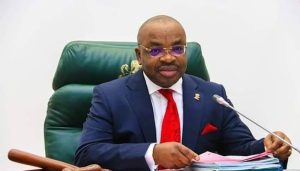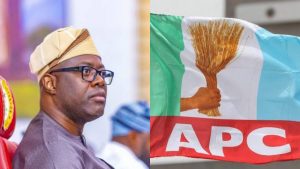Republican Nigeria: The birth of a sovereign nation in 1963
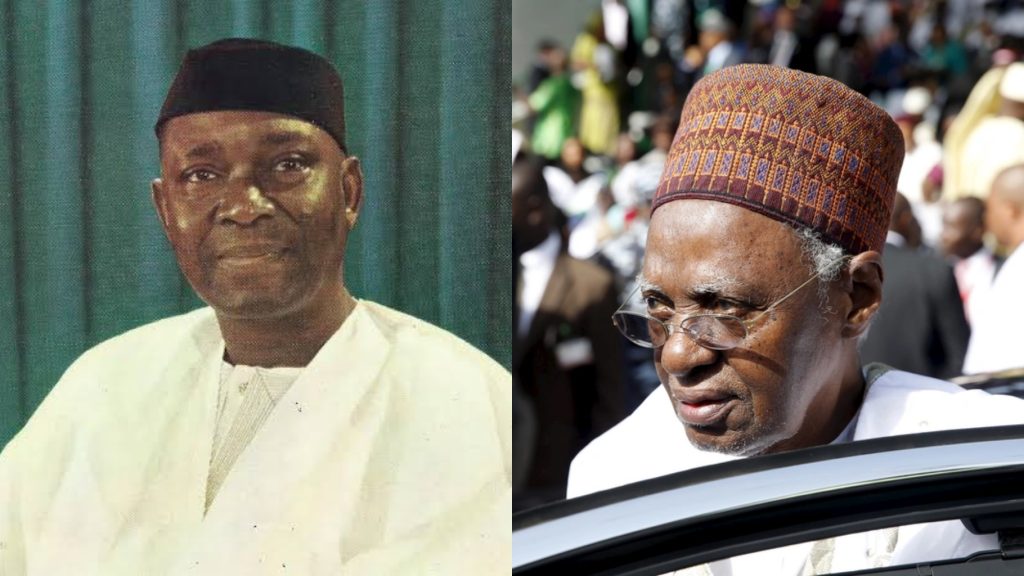
Nnamdi Azikiwe, Shehu Shagari
Republican Nigeria refers to the period in Nigeria’s history when the country operated as a republic—a system of government where the head of state is elected and not a monarch. Specifically, the term usually applies to two distinct periods:
1. First Republic (1963–1966)
- Start: October 1, 1963
Nigeria officially became a republic, ending its status as a constitutional monarchy under the British crown. - Change: The office of the Governor-General (the Queen’s representative) was abolished and replaced by a President as the ceremonial head of state.
- First President: Dr. Nnamdi Azikiwe
- Prime Minister (Head of Government): Sir Abubakar Tafawa Balewa
- System: Parliamentary democracy, similar to the British Westminster model.
- End: January 15, 1966
The First Republic was overthrown in Nigeria’s first military coup.
2. Second Republic (1979–1983)
- After years of military rule following the 1966 coup, Nigeria returned to civilian rule in 1979.
- Start: October 1, 1979
- System: Presidential system (modeled after the U.S.)
- President: Alhaji Shehu Shagari
- End: December 31, 1983
Overthrown in a military coup led by Major General Muhammadu Buhari.
Key Features of Republican Nigeria
- No allegiance to the British monarch.
- Indigenous constitution (first in 1963, revised in 1979).
- Elected Nigerian heads of state.
- Reflects a move toward full political sovereignty.
Summary Timeline:
Period, Type of Government, Head of State, Notes
- 1960–1963 – Constitutional Monarchy – Queen Elizabeth II – Represented by a Governor-General
- 1963–1966 – First Republic – President Nnamdi Azikiwe – Parliamentary system
- 1966–1979 – Military Rule – Military Heads of State – Coups and civil war
- 1979–1983 – Second Republic – President Shehu Shagari – Presidential system
From Monarchy to Republic: Nigeria Before 1963
Before Nigeria became a republic in 1963, its political evolution was deeply shaped by centuries of indigenous governance, colonial rule, and a gradual transition to self-government. The journey from monarchy to republic traces Nigeria’s transformation from traditional systems of authority through British colonial domination to eventual independence and constitutional reform.
Pre-Colonial Monarchical Systems
Prior to colonial rule, what is now known as Nigeria was home to powerful kingdoms and emirates, each with its own political structures. Notable among these were:
The Oyo Empire (in the southwest), governed by an Alaafin and a complex system of checks and balances involving the Oyo Mesi (council of elders).
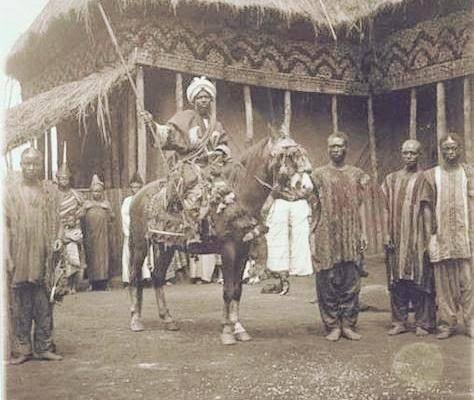
The Benin Kingdom, known for its highly centralized monarchy and artistic heritage.
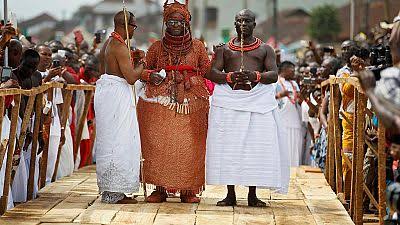
The Sokoto Caliphate in the north, established by Uthman dan Fodio in the early 19th century, was a vast Islamic empire ruled by a Caliph and emirs who governed according to Islamic law.
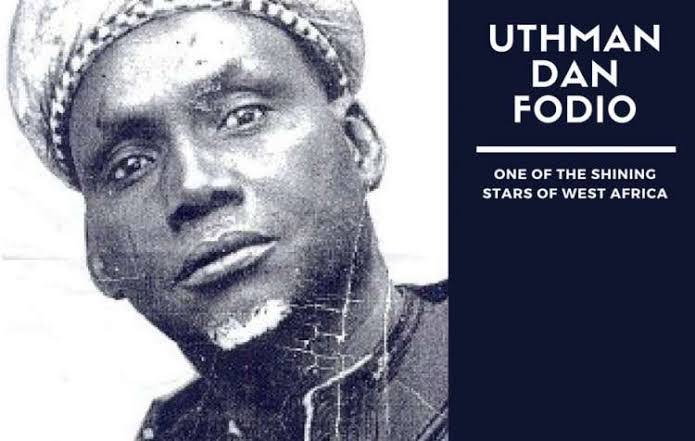
Numerous Igbo communities in the southeast operated decentralized systems with councils of elders and age-grade associations rather than monarchies.
These pre-colonial systems represented diverse political traditions, with many rooted in monarchic authority or communal leadership.
Colonial Rule and Indirect Administration
The British colonized Nigeria in the late 19th century, formalizing control with the 1914 amalgamation of the Northern and Southern Protectorates under Governor-General Lord Lugard. Britain employed a policy of indirect rule, particularly in the north, where existing monarchical structures like the emirs were retained to administer colonial policies.
In contrast, in the south and east, where centralized monarchies were less prevalent, indirect rule was more difficult. The British introduced warrant chiefs and administrative reforms that disrupted traditional systems, leading to resistance and instability.
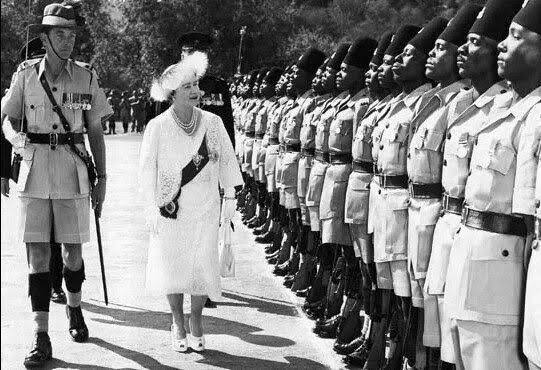
Towards Self-Government: The Road to Independence

Following World War II, nationalist movements gained momentum. Figures like Nnamdi Azikiwe, Obafemi Awolowo, and Ahmadu Bello emerged as key leaders demanding political reform and autonomy.
- The Richards Constitution (1946) laid the foundation for regionalism by dividing Nigeria into three regions: North, West, and East.
- The Macpherson Constitution (1951) expanded regional autonomy and introduced elected regional legislatures.
- The Lyttleton Constitution (1954) established a federal system, a step closer to full self-government.
These constitutional reforms incrementally shifted Nigeria from colonial control toward internal self-rule. In 1960, Nigeria gained independence as a constitutional monarchy within the Commonwealth, with Queen Elizabeth II as Head of State, represented locally by a Governor-General.
The First Republic and the End of Monarchy
Although Nigeria was independent in 1960, it remained a constitutional monarchy. The final step toward republicanism came on October 1, 1963, when Nigeria adopted a new constitution and formally became a republic. The monarchy was abolished, the position of Governor-General was replaced with a ceremonial President, and Nnamdi Azikiwe became Nigeria’s first President.
This marked the end of British symbolic rule and affirmed Nigeria’s full sovereignty as a democratic federal republic.
The shift from monarchy to republic in Nigeria was neither abrupt nor simple. It reflected a complex interplay of indigenous traditions, colonial imposition, and nationalist aspirations. Nigeria’s evolution before 1963 illustrates a layered political history—rooted in monarchical legacies, reshaped by colonialism, and ultimately transformed by the desire for self-determination and republican governance.
The 1963 Republican Constitution Explained
The 1963 Republican Constitution marked a significant turning point in Nigeria’s political history. It officially transformed the country from a constitutional monarchy under British rule into a republic, cementing its sovereignty and laying the groundwork for Nigerian self-governance without external influence. This constitution came into effect on October 1, 1963, exactly three years after Nigeria gained independence.
Background
Before 1963, Nigeria operated under the 1960 Independence Constitution, which still recognized the British monarch—Queen Elizabeth II—as the ceremonial Head of State. Although Nigeria was an independent nation, the Queen was represented by a Governor-General, and some elements of British oversight still lingered.
Nigerians, especially nationalist leaders, desired complete autonomy. Thus, the 1963 Republican Constitution was created to reflect full independence and self-rule.
Key Features of the 1963 Republican Constitution
- Nigeria Becomes a Republic
The most defining change was Nigeria’s status as a republic. This meant:
The British monarch was no longer Head of State.
The position of President of the Republic was created, with Dr. Nnamdi Azikiwe becoming the first ceremonial President.
The role of the Governor-General was abolished.
- Federal Structure Maintained
The Constitution retained Nigeria’s federal structure, which was composed of:
Four regions: Northern, Western, Eastern, and Mid-Western (created in 1963).
Each region had a high degree of autonomy, with its own regional constitution, premier, and legislature.
- Parliamentary System
Nigeria maintained a parliamentary system of government.
The Prime Minister, Sir Abubakar Tafawa Balewa, remained the Head of Government.
The Prime Minister was responsible for the day-to-day administration and policy execution.
Ministers were appointed from the majority party or coalition in the Federal Parliament.
- President as Ceremonial Head
The President had largely symbolic duties with little executive power.
He was elected by the Federal Legislature, not by popular vote.
- Judicial Independence
The Supreme Court of Nigeria became the final court of appeal.
Appeals to the Judicial Committee of the Privy Council in London were abolished.
This established full judicial sovereignty for Nigeria.
- Citizenship and Fundamental Rights
The Constitution defined citizenship and protected fundamental human rights such as:
Right to life
Right to personal liberty
Freedom of speech, assembly, and movement
Freedom from discrimination
- Creation of the Mid-Western Region
The 1963 Constitution led to the creation of the Mid-Western Region from the Western Region, marking Nigeria’s first peaceful state creation process.
Significance of the 1963 Republican Constitution
Total Break from British Rule: It was Nigeria’s first indigenous constitution, drafted and enacted by Nigerians themselves.
Symbol of Sovereignty: It reflected national pride and affirmed that Nigeria could manage its affairs without colonial interference.
Continued Regionalism: While it ensured more autonomy for the regions, it also deepened regionalism, which later contributed to political instability.
Foundation for Civil Rule: The constitution guided the First Republic (1963–1966) until the military intervened in 1966.
Downfall and Legacy
Despite its historical importance, the 1963 Constitution had shortcomings:
Political tension and ethnic rivalry were growing.
The constitution did not effectively address ethnic imbalance, election irregularities, and regional dominance.
It was suspended following the military coup of January 15, 1966.
Still, the 1963 Republican Constitution remains a landmark in Nigeria’s constitutional evolution and a critical symbol of national maturity and independence.
Differences Between Colonial, Parliamentary, and Republican Nigeria
1. Colonial Nigeria (1861–1960)
Political Control: Ruled by Britain; the Governor-General represented the British Crown.
Legal Authority: Final authority rested in London.
Nigerians’ Role: Limited political participation; few Africans in government.
Constitution: Series of colonial constitutions (e.g., Clifford 1922, Macpherson 1951).
Independence: Ended with independence on October 1, 1960.
2. Parliamentary Nigeria (1960–1963)
Political System: Parliamentary democracy (Westminster model).
Head of State: British Monarch (Queen Elizabeth II) represented by a Governor-General.
Head of Government: Prime Minister (e.g., Sir Abubakar Tafawa Balewa).
Constitution: 1960 Independence Constitution.
Sovereignty: Partial—Britain still symbolic head of state.
3. Republican Nigeria (from 1963)
Political System: Full Republic.
Head of State: Nigerian President (e.g., Dr. Nnamdi Azikiwe).
Head of Government: Still Prime Minister until military coup in 1966.
Constitution: 1963 Republican Constitution.
Sovereignty: Full—no ties to British monarchy.
Key Differences:
Authority: Colonial = British rule; Parliamentary = symbolic British head; Republican = full Nigerian control.
Leadership: Shift from foreign-appointed to fully Nigerian heads of state.
Constitutional Power: Evolved from foreign-based to Nigerian-made constitutions.
Impact of Republicanism on Nigeria’s Political System
Republicanism had a significant impact on Nigeria’s political system following the adoption of the 1963 Republican Constitution. This system marked the end of British colonial influence and established Nigeria as a sovereign republic.
Key impacts include:
- Abolition of the British Monarchy: Nigeria ceased to recognize the British monarch as head of state. Instead, a ceremonial President replaced the British Governor-General.
- Greater National Sovereignty: Republicanism gave Nigeria full control over its internal and external affairs, symbolizing true independence.
- Strengthening of Parliamentary Democracy: Although republican, Nigeria maintained a parliamentary system where the Prime Minister held executive powers, promoting representative governance.
- Legal Independence: The Judicial Committee of the Privy Council in London was replaced by the Supreme Court of Nigeria as the highest court of appeal, enhancing judicial autonomy.
- Symbolic Unity and National Identity: Becoming a republic fostered a stronger sense of national pride and identity, crucial in the post-independence era.
In summary, republicanism marked Nigeria’s full political autonomy and laid the foundation for indigenous governance, although political instability and military interventions later challenged its sustainability.
Legacy of Republican Nigeria Today
The legacy of Republican Nigeria, which began in 1963 when the country adopted its first republican constitution, continues to shape the nation’s political and constitutional development. Here are key elements of that legacy:
1. Sovereignty and National Identity
- Nigeria’s shift from a monarchy to a republic marked a significant step in asserting full national sovereignty.
- The removal of the British monarch as Head of State helped foster a stronger sense of national identity and pride.
2. Constitutional Development
- The 1963 Republican Constitution laid the groundwork for later constitutional reforms.
- It introduced the idea of a Nigerian president as ceremonial Head of State, separate from the Prime Minister (Head of Government), influencing future presidential systems.
3. Federalism
- Republican Nigeria continued the federal structure, granting significant autonomy to the regions.
- Though later adjusted by military regimes, this federal idea remains central to Nigeria’s political system today.
4. Judicial Independence
- The establishment of a Supreme Court of Nigeria, independent from the British Privy Council, set the foundation for a truly sovereign judiciary.
5. Political Instability Lessons
- The political crisis and military coup that followed in 1966 exposed the weaknesses of Nigeria’s early republican system.
- These experiences informed the more centralized presidential system adopted in the 1979 Constitution and refined in 1999.
6. Ongoing Debates
- Issues like regional autonomy, power-sharing, and true federalism, rooted in the 1963 structure, are still debated today.
Republican Nigeria’s legacy lies in the assertion of full independence, the evolution of a Nigerian-led judiciary, and the ongoing quest to balance power among the country’s diverse regions. These foundational elements continue to influence Nigeria’s political structure, constitutional debates, and democratic aspirations.
FAQs About Republican Nigeria
Here’s a clean, SEO-friendly website/blog format for your:
FAQs About Republican Nigeria
If you’re curious about Nigeria’s early political evolution, particularly the republican phase, this FAQ page provides clear answers to common questions.
1. What is Republican Nigeria?
Republican Nigeria refers to the period after Nigeria transitioned from a constitutional monarchy to a republican system of government. This began on October 1, 1963, when the country adopted the 1963 Republican Constitution, replacing the British monarch with a Nigerian President.
2. When did Nigeria become a republic?
Nigeria officially became a republic on October 1, 1963, three years after gaining independence from British colonial rule.
3. What changed in 1963?
The major change was the replacement of the British monarch as Nigeria’s Head of State with a Nigerian ceremonial President. It also reinforced federalism and retained the parliamentary system.
4. Who was Nigeria’s first President under the republic?
Dr. Nnamdi Azikiwe became Nigeria’s first President in 1963, while Sir Abubakar Tafawa Balewa remained the Prime Minister and head of government.
5. Did Nigeria leave the Commonwealth after becoming a republic?
No. Nigeria remained a member of the British Commonwealth of Nations, similar to other republics like India.
6. What kind of government did Republican Nigeria practice?
Nigeria continued with a parliamentary system of government where executive powers were held by the Prime Minister, and the President was a ceremonial figure.
7. Why did Nigeria become a republic?
To:
- Assert complete sovereignty
- Remove symbolic colonial authority
- Establish a fully indigenous leadership structure
8. How long did the First Republic last?
Republican Nigeria, also known as the First Republic, lasted from 1963 to 1966. It ended with the military coup of January 15, 1966.
9. What was the 1963 Republican Constitution?
It was the legal framework that:
- Declared Nigeria a sovereign republic
- Maintained the parliamentary structure
- Replaced the Queen with a Nigerian President
- Strengthened federalism and regional autonomy
10. What caused the fall of Republican Nigeria?
Key reasons include:
- Ethnic and regional tensions
- Electoral malpractice and violence
- Corruption and political instability
These led to a military takeover, ending the republic in January 1966.
Nigerian Republic
Nigerian Republic refers to Nigeria’s status and system of government as a republic, in which the country is governed by elected representatives and an elected head of state, rather than a monarch.
There are two main republics in Nigeria’s history:
1. First Nigerian Republic (1963–1966)
- Established: October 1, 1963 – Nigeria became a republic and replaced the British monarch with a President as Head of State.
- President: Dr. Nnamdi Azikiwe (first President of Nigeria)
- Prime Minister: Abubakar Tafawa Balewa (remained Head of Government)
- System: Parliamentary democracy
- Collapse: Military coup on January 15, 1966
2. Second Nigerian Republic (1979–1983)
- Established: October 1, 1979 – after years of military rule
- President: Shehu Shagari (executive presidential system modeled after the U.S.)
- System: Presidential democracy with separation of powers
- Collapse: Military coup on December 31, 1983, led by General Muhammadu Buhari
Later Developments
- Third Republic (Aborted): Initiated in the early 1990s but never fully realized due to the annulment of the 1993 election.
- Fourth Republic (Current): Began on May 29, 1999. Nigeria currently operates under the Fourth Republic using a presidential system.
Key Features of Republican Nigeria
- No monarch (unlike colonial Nigeria)
- Head of State is elected (not hereditary)
- Emphasis on constitutional democracy
- Separation of powers among executive, legislative, and judicial branches
Post-independence Nigeria
Here is the Post-Independence Nigeria content written in clean, WordPress-ready HTML format:
Post-Independence Nigeria (1960 – Present)
After gaining independence from Britain on October 1, 1960, Nigeria embarked on a challenging journey toward nation-building, unity, and development. The country inherited a federal structure and a parliamentary system but soon faced serious political, ethnic, and economic challenges.
Key Phases of Post-Independence Nigeria
1. First Republic (1963–1966)
- Nigeria became a republic in 1963, replacing the British monarch with a ceremonial president.
- The political scene was dominated by regional parties: the NPC (North), NCNC (East), and AG (West).
- Widespread corruption, election rigging, and ethnic tensions led to the first military coup in January 1966.
2. Military Rule and Civil War (1966–1979)
- A series of military coups and counter-coups followed.
- From 1967 to 1970, Nigeria was engulfed in the Biafran Civil War, as the Eastern Region attempted to secede.
- Post-war efforts focused on “Reconstruction, Reconciliation, and Rehabilitation.”
- Military rule continued until 1979, though General Murtala Mohammed introduced reforms before his assassination in 1976.
3. Second Republic (1979–1983)
- A new presidential system of government was adopted.
- President Shehu Shagari was elected but removed in a military coup in 1983 due to corruption and mismanagement.
4. More Military Rule (1983–1999)
- Military rulers such as General Buhari, General Babangida, and General Abacha dominated this era.
- The economy suffered due to poor policies and corruption.
- Political transition efforts repeatedly failed, notably the annulled June 12, 1993 elections.
- After Abacha’s death in 1998, General Abdulsalami Abubakar initiated a peaceful transition.
5. Fourth Republic (1999–Present)
- Democracy was restored in 1999 with the election of President Olusegun Obasanjo.
- Nigeria has held several democratic elections since, though issues of electoral fraud and insecurity persist.
- Key challenges include corruption, terrorism (Boko Haram), ethnic and religious conflict, and economic instability.
- The country has made progress in telecommunications, entrepreneurship, and cultural exports such as Nollywood and Afrobeats.
Conclusion
Post-independence Nigeria is a story of both setbacks and progress. Despite facing numerous challenges—military coups, civil war, and poor governance—Nigeria continues to strive toward a more stable and prosperous democratic future.






